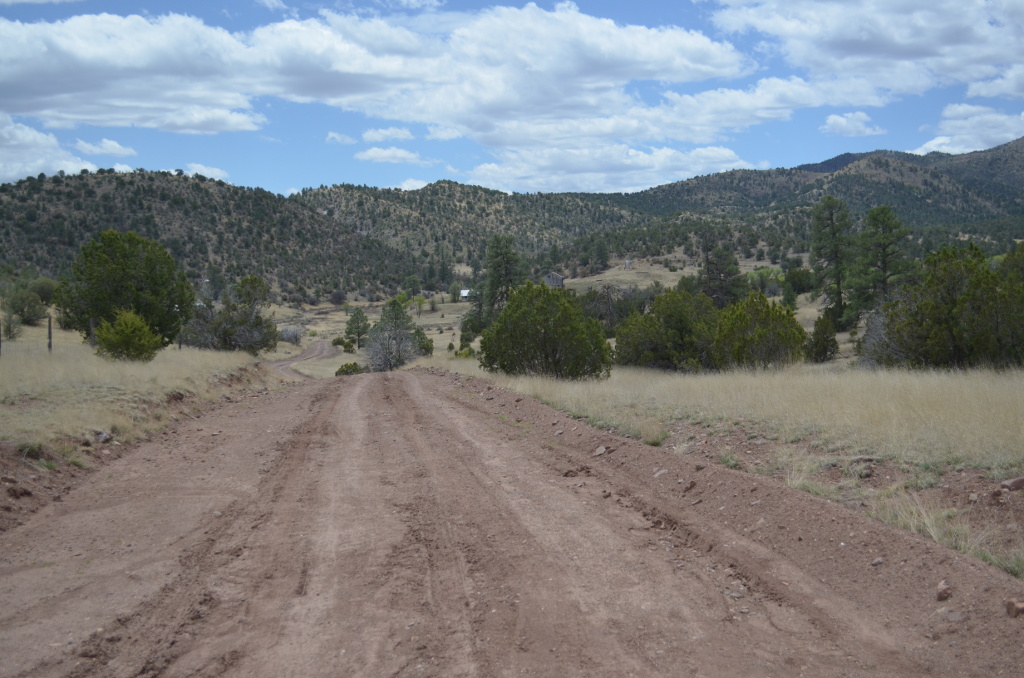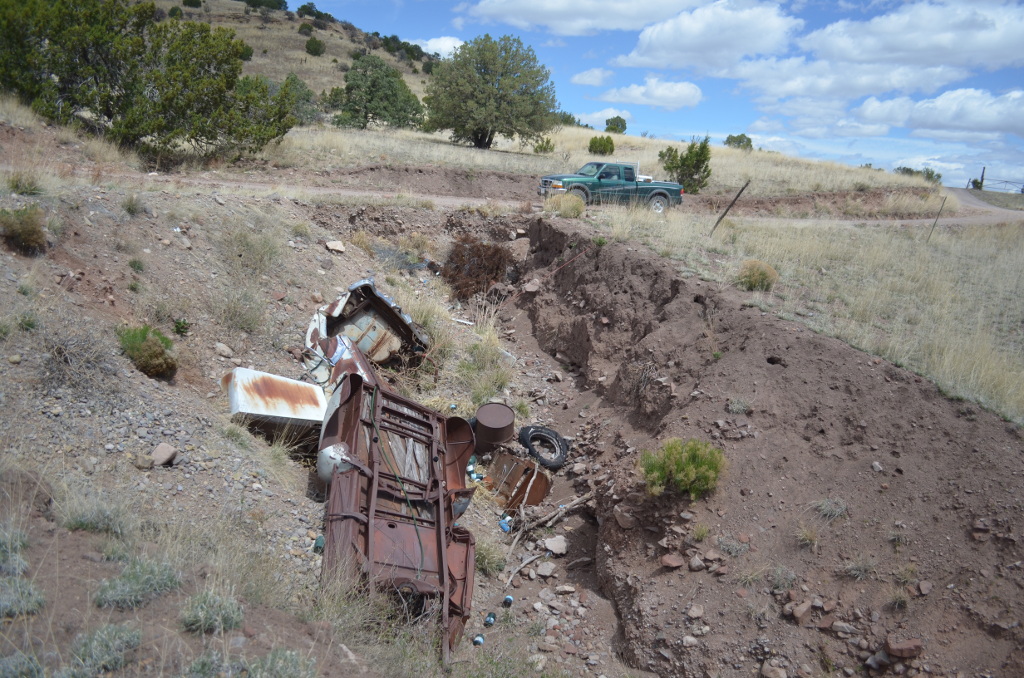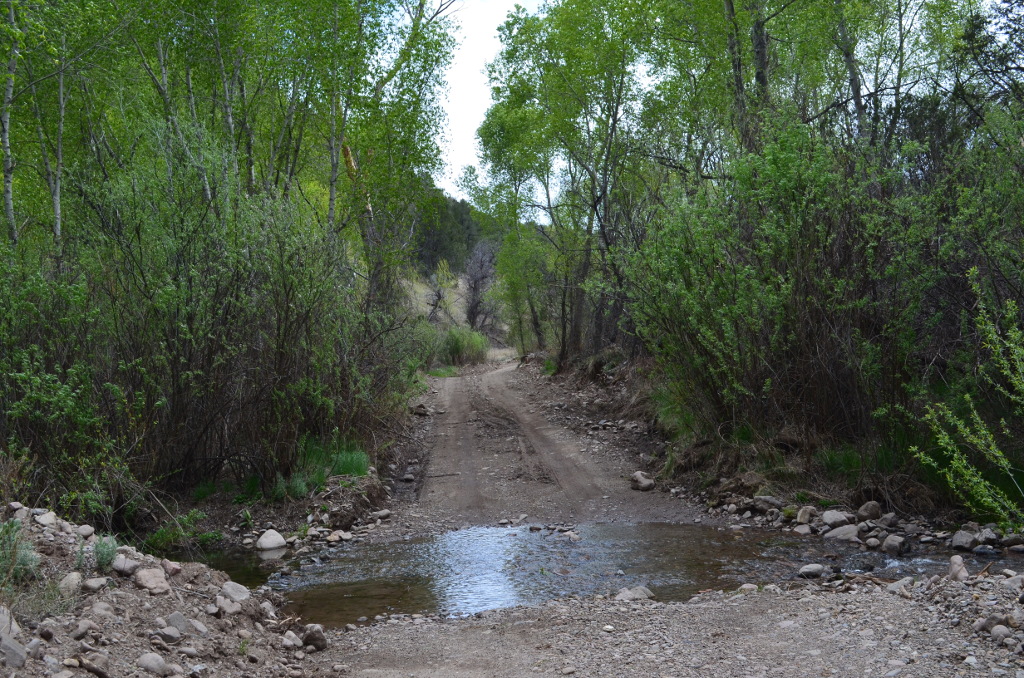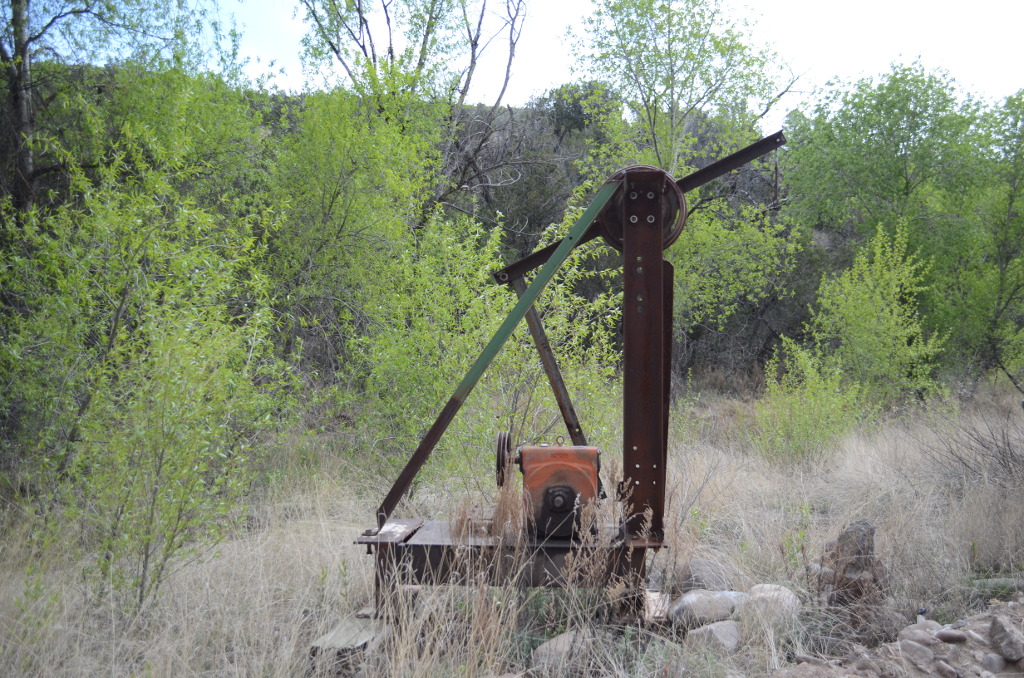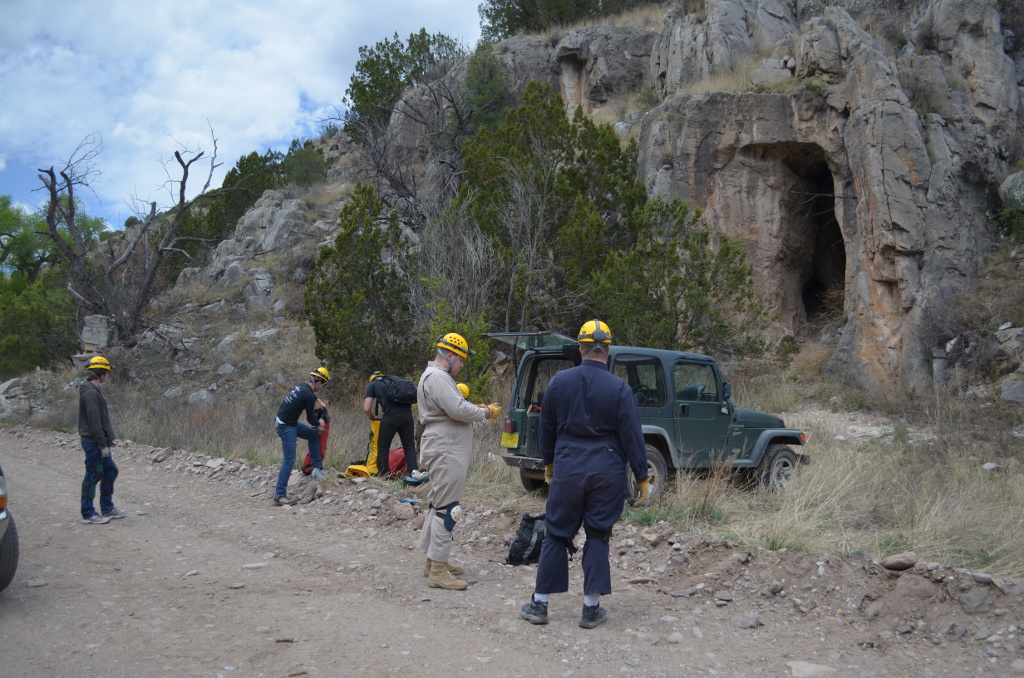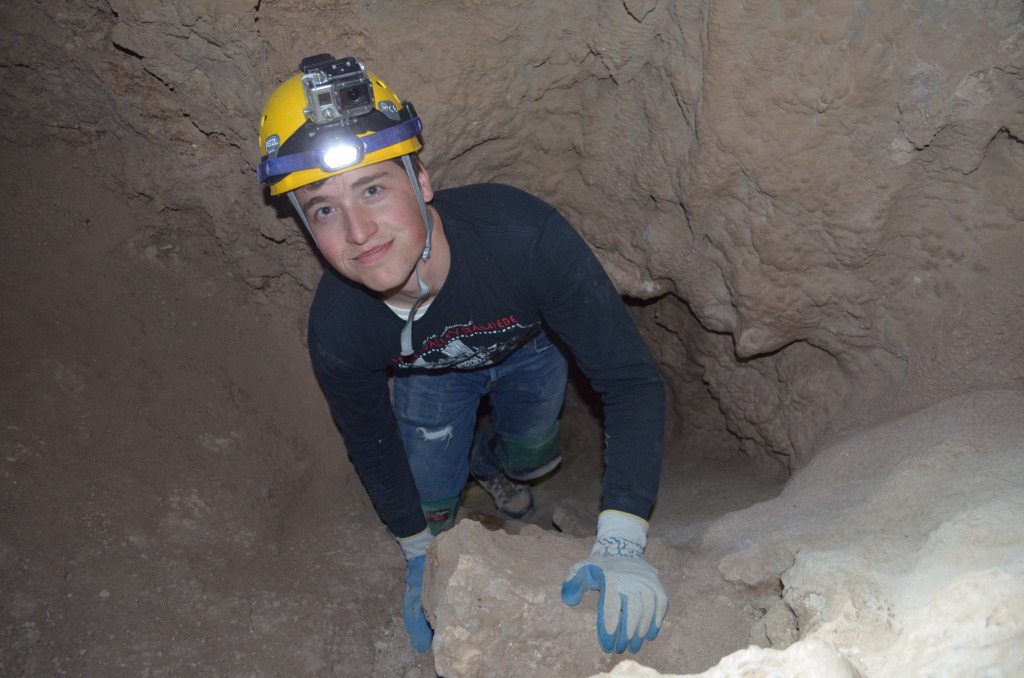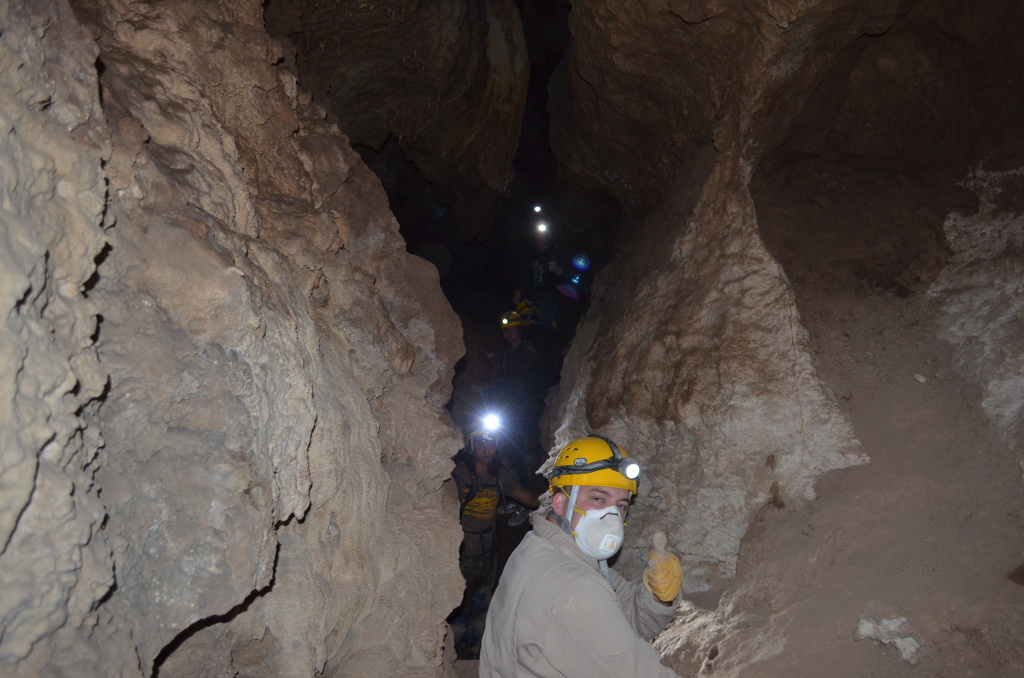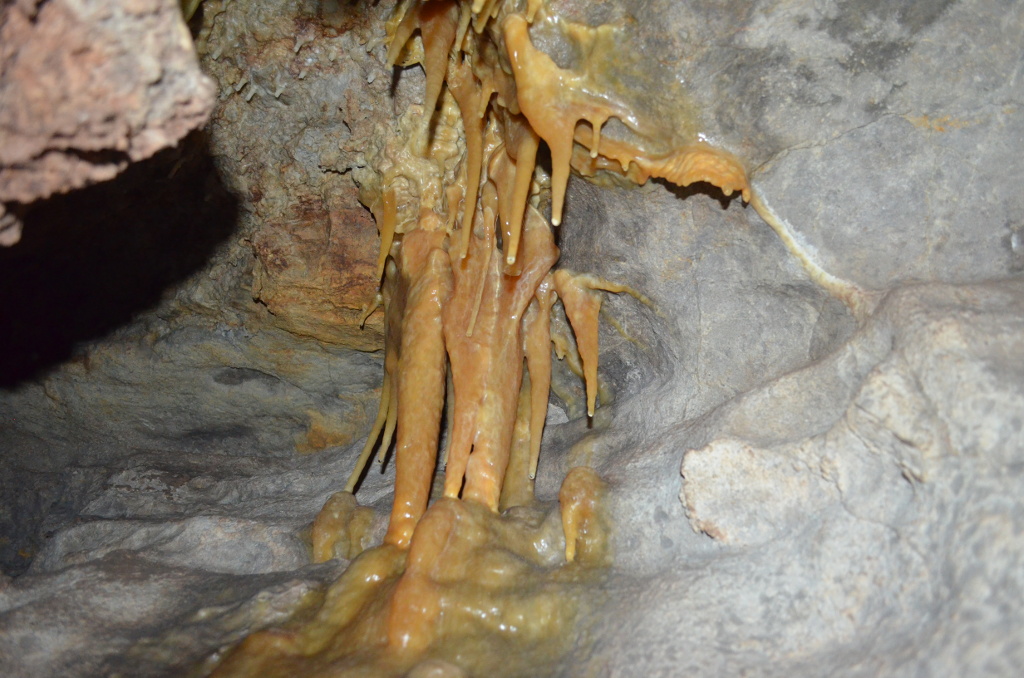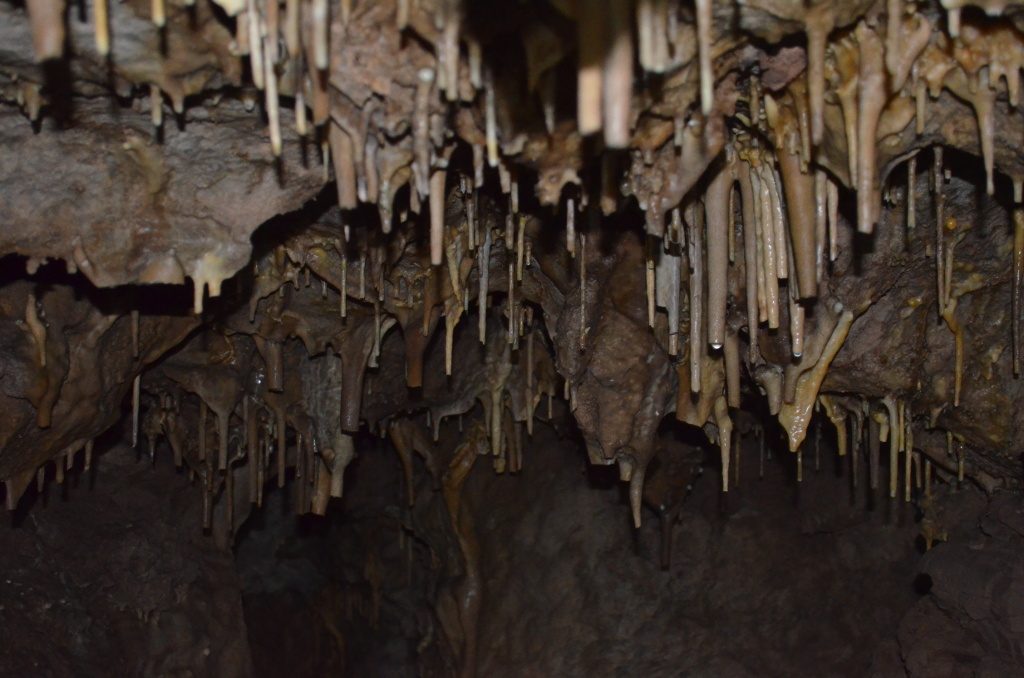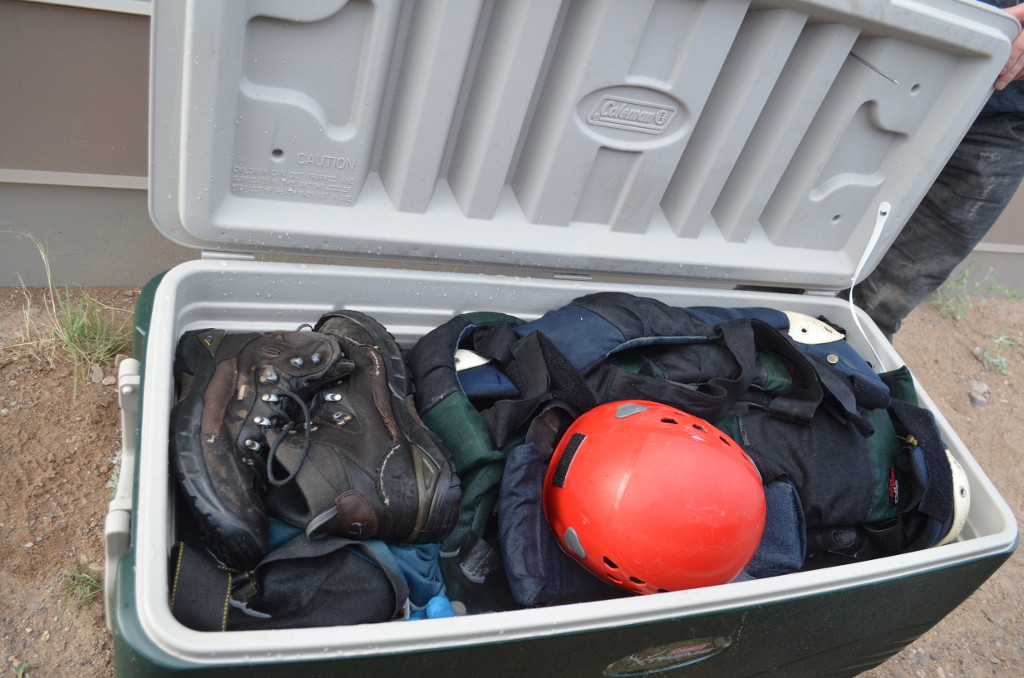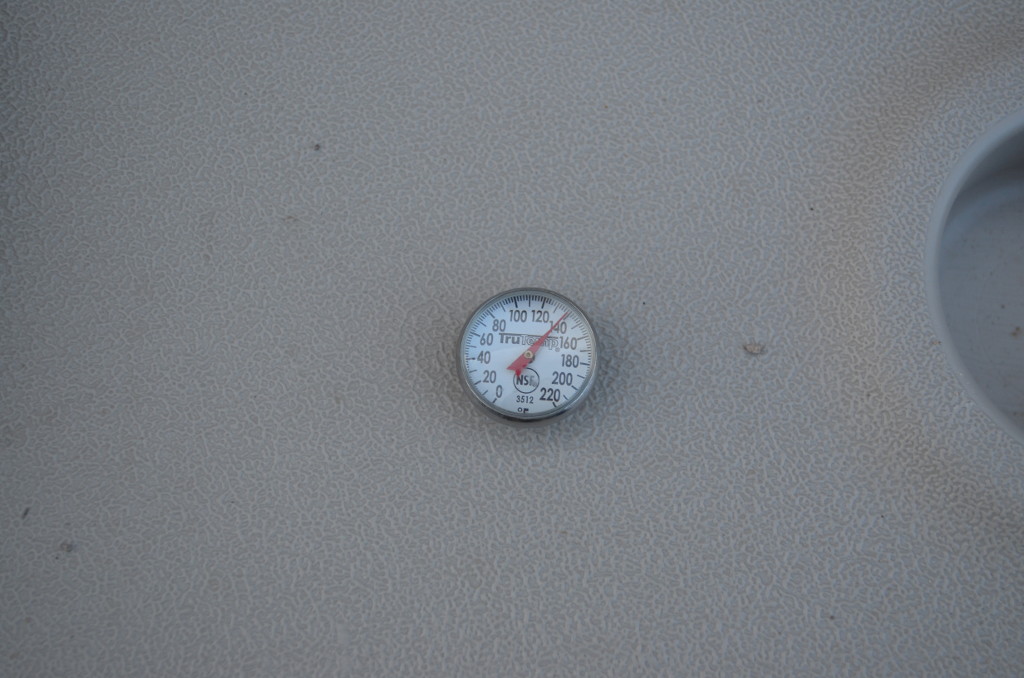Trip Report: Hermosa Cave
NMT Caving Club, April 30th 2016
This trip report covers an NMT Caving Club to Hermosa Cave. We met on campus at 8:30AM in the morning, went caving, and returned at about 5:00PM.
Trip leader: David Hunter
Attending: Barton, Ben, Joe, Josh, and Luis
Hermosa Cave is a small limestone cave located in one of New Mexico's many National Forests. It is just large enough to make a good beginners cave, with a few short walking passages, a number of tight crawls, some neat formations, and a few climbs.
The drive to Hermosa Cave takes you a long ways off the main road. There were a few people living in the nearest village, but it was almost a ghost town. And this was around an hour drive past the last gas station, of which also seemed to serve as the area grocery and sporting good store.
On the long dirt road there is a gully with a few old cars in it. Maybe somebody was driving too fast and lost control. Maybe it was a sad attempt at erosion control. More likely, somebody had a few old cars to dispose of and didn't feel like taking them to the junk yard.
The creek crossing was nowhere near as eventful as my first visit to the cave. Somebody, presumably the Forest Service, seems to be keeping the road better maintained.
An old abandoned device completes the rustic feel of the area.
Once we arrived at the cave we had lunch and got ready to go in. This cave is small enough that you just eat lunch outside of the cave to minimize the risk of spilling food inside.
As usual the beginning cavers were eager to climb up to the upper level of the cave. This is a gentle introduction to the scrambling that is required of all serious cavers.
One of the largest passages in the cave. Wearing a dust mask can helps in dusty caves especially if you have allergies.
A few nice formations can be found in the cave. Over the years a moderate amount of damage has occurred, and there were never that many to begin with.
As usual, beginning cavers are instructed in the importance of cave preservation and the strict prohibition on removal of cave formations. Consider how much nicer this seen would be if everybody understood that.
Everybody enjoyed a few hours in the cave, some of whom got rather covered with mud in a crawl way - but nowhere nears as muddy as everybody got in the Robinson's trip last March.
Once back in Socorro we completed the mandatory WNS decontamination to insure that we do not contribute to the spread of WNS. A large camp cooler is a good way to submerge gear in hot water for the required 20 minutes. Remember that the gear must be kept fully submerged; an air pocket should not be left at the top.
A small hole with a thermometer allows for quick and easy temperature monitoring. After 20min the temperature remained well above the required 131° F temperature.
Last Updated: May 2016; Original Posting.
© David C. Hunter, 2016
nmtcaver {at) dragonsdawn (dot] org


